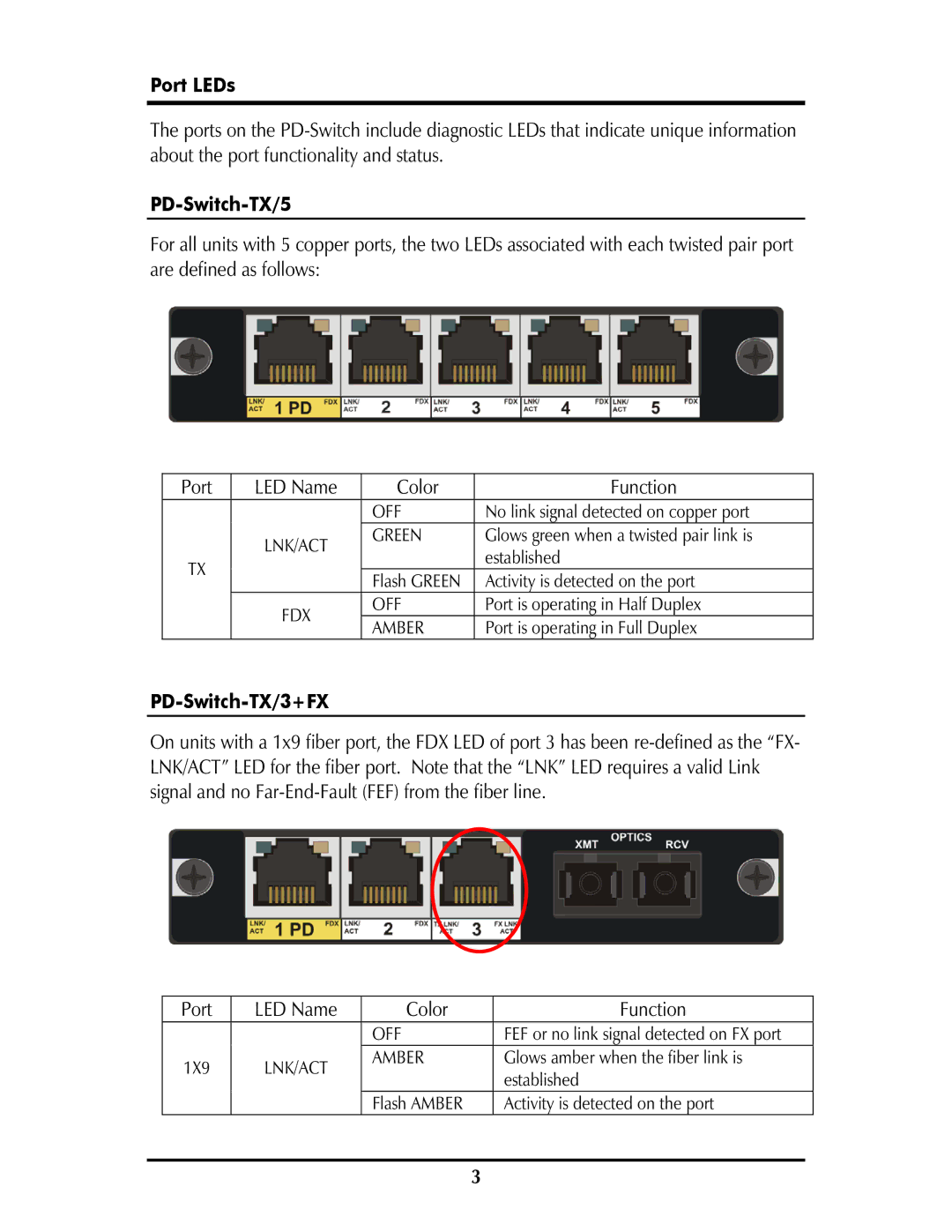PD-Switch specifications
IMC Networks PD-Switch is a highly versatile and robust networking solution designed to enhance the connectivity and power management capabilities of various network devices. Aimed at businesses that require reliable performance and seamless integration, this device is particularly suitable for applications in environments such as enterprise networks, data centers, and service provider infrastructures.One of the standout features of the IMC Networks PD-Switch is its Power over Ethernet (PoE) functionality. This technology enables the switch to deliver both data and electrical power to connected devices through the same Ethernet cable. This is particularly beneficial for powering devices like IP cameras, VoIP phones, and wireless access points, resulting in reduced cabling costs and simplified installations. The switch supports PoE standards, ensuring compatibility with a wide range of powered devices.
Another key characteristic of the PD-Switch is its scalability. The switch offers multiple ports, allowing users to expand their network easily as their needs grow. This feature is particularly advantageous for businesses that anticipate increasing their device count over time. The modular design allows for configuration adjustments, boosting flexibility and ensuring that the network infrastructure can adapt to changing demands.
The PD-Switch is built with high-performance networking technologies that ensure reliable and efficient data transmission. With advanced switching capabilities, the device minimizes latency and optimizes data flow, crucial for latency-sensitive applications such as video conferencing and real-time data analytics. The high throughput capabilities make it suitable for high-bandwidth applications, supporting multiple concurrent users without compromising performance.
In addition to its robust performance specifications, the IMC Networks PD-Switch places a strong emphasis on security. It comes equipped with features like VLAN support, port security, and access control lists (ACLs) to ensure that sensitive data is protected against unauthorized access. Enhanced network monitoring capabilities provide administrators with insights into traffic patterns, helping to identify potential security threats and optimize network performance.
Moreover, the PD-Switch is designed for easy installation and management. Intuitive user interfaces and management tools simplify configuration tasks, allowing IT teams to deploy and maintain the switch with minimal effort. This user-friendly approach reduces the learning curve for network administrators and enhances overall operational efficiency.
Overall, the IMC Networks PD-Switch combines essential features like PoE support, high performance, security, and easy management to deliver a comprehensive networking solution. As businesses increasingly rely on digital technologies, the PD-Switch serves as a valuable tool in building an efficient and scalable network infrastructure capable of supporting future growth.

